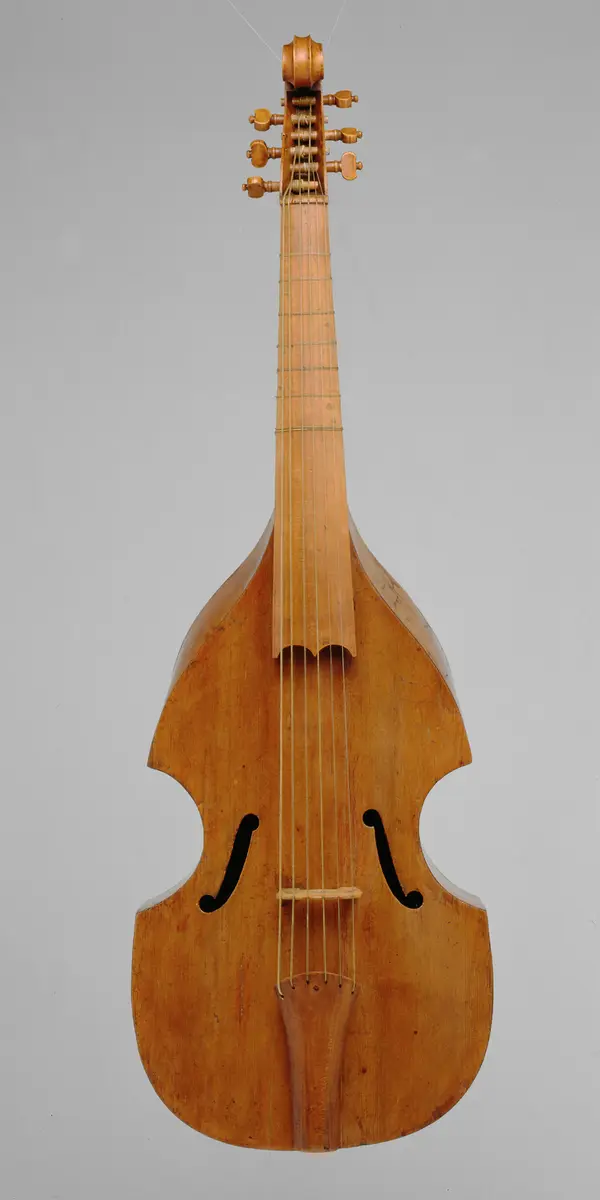Viola da gamba (viol)
Die Tenorgambe von Francesco Linarol zählt zu den wenigen Renaissancegamben, die in originalem Zustand erhalten blieben. Einem dendrochronologischen Gutachten zufolge kann Linarols Gambe frühestens 1582 entstanden sein. Sie ist also als Spätwerk anzusehen und zeigt Merkmale, die für den Gambenbau der Spätrenaissance typisch sind. Dazu zählen die nach vorne abfallenden Zargen des Oberbügels und die besondere Ausarbeitung der Decke. Bei späteren Instrumenten wird deren Wölbung aus einem massiven Stück Holz gestochen. Wie an Linarols Instrument zu sehen ist, hobelte man sie in früherer Zeit dünn aus und bog sie über zwei Querrippen in ihre gewölbte Form. Dank dieser Bauweise besitzen die frühen Gamben einen sehr hellen und lange nachklingenden Ton, der Ähnlichkeit mit dem Lautenklang besitzt. (rh)
Literatur:Julius Schlosser: Die Sammlung alter Musikinstrumente. Beschreibendes Verzeichnis, Wien 1920.Rudolf Hopfner: Meisterwerke der Sammlung alter Musikinstrumente, Wien 2004.
Manufacturer:
Francesco Linarol (tätig in Venedig, ca. 1515/20 - vor 1601)
Time:
16th century
Object Name:
Viola da gamba (viol)
Culture:
Italy, Venice
Dimensions:
880 mm x 270 mm x 130 mm
Copyright:
Kunsthistorisches Museum Wien, Sammlung alter Musikinstrumente
Invs.:
Sammlung alter Musikinstrumente, 66
